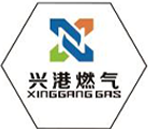
Dec . 25, 2024 04:02
Back to list
Understanding the Functionality of Gas Pressure Regulators in Various Applications
Understanding Gas Pressure Reducers Functionality, Applications, and Importance
A gas pressure reducer, commonly known as a gas pressure regulator, is an essential device used in various industries and applications to control and maintain a specific pressure of gas. Whether in residential settings, industrial operations, or commercial environments, gas pressure reducers play a crucial role in ensuring safety, efficiency, and operational effectiveness.
Functionality of Gas Pressure Reducers
Gas pressure reducers work by decreasing the high pressure of the incoming gas to a lower, usable pressure for the specific application. The device typically consists of two main components an inlet and an outlet. The inlet connects to the high-pressure gas source, while the outlet delivers gas at a reduced pressure to the end-use equipment.
The process begins when high-pressure gas enters the reducer. Inside the device, a diaphragm or piston mechanism responds to the pressure fluctuations. If the incoming pressure exceeds the predetermined setpoint, the diaphragm moves to restrict the gas flow, effectively reducing the pressure. Conversely, if the pressure drops below the desired level, the diaphragm adjusts to allow more gas to pass. This dynamic adjustment ensures a stable and continuous output pressure, vital for the efficient operation of connected systems or appliances.
Types of Gas Pressure Reducers
There are several types of gas pressure reducers, each designed for particular applications. For example, there are
1. Single-stage Regulators These are typically used for applications where the pressure change from the source to the application is not substantial. They are simpler and less costly but may not provide the precision required in high-demand scenarios.
2. Dual-stage Regulators These offer better pressure regulation by providing two stages of pressure reduction. They are ideal for applications where pressure stability is critical, such as in gas distribution systems or certain industrial processes.
3. Low and High-Pressure Regulators Depending on the application, regulators can be designed for either low or high-pressure applications. Low-pressure regulators are often used in residential settings for appliances, while high-pressure versions are suitable for industrial uses.
gas pressure reducer

Applications of Gas Pressure Reducers
Gas pressure reducers are ubiquitous across numerous sectors. In the residential sphere, they are commonly found in household gas supply lines for stoves, heaters, and fireplaces. Proper regulation ensures that appliances function safely and efficiently without the risk of explosions due to high pressure.
In the industrial sector, these devices are crucial for processes that involve welding, cutting, or chemical manufacturing. For instance, in welding applications, maintaining the correct gas pressure is vital for achieving quality welds. Similarly, in gas distribution networks, pressure reducers enable the safe and efficient delivery of natural gas to consumers.
In the medical field, gas pressure regulators manage the delivery of gases like oxygen, ensuring that patients receive the correct dosage essential for treatments.
Importance of Gas Pressure Reducers
The importance of gas pressure reducers cannot be overstated. Firstly, they significantly enhance safety. By preventing overpressure situations, they reduce the risk of accidents and failures in gas systems. Secondly, they improve efficiency. Maintaining an optimal pressure helps equipment operate at peak performance, saving energy and resources.
Moreover, compliance with regulatory standards is another crucial aspect. Many industries must adhere to strict safety regulations, and having reliable gas pressure reducers is often a requirement for compliance.
Conclusion
In conclusion, gas pressure reducers are fundamental components in the management and control of gas systems across various applications. By effectively regulating gas pressure, they contribute to safety, efficiency, and compliance in both residential and industrial settings. As technology advances, we can expect further innovations in gas pressure regulation, enhancing performance and safety standards even more. Understanding and implementing proper gas pressure regulation is crucial for anyone working with or relying on gas systems.
Next:
Latest news
-
Safety Valve Spring-Loaded Design Overpressure ProtectionNewsJul.25,2025
-
Precision Voltage Regulator AC5 Accuracy Grade PerformanceNewsJul.25,2025
-
Natural Gas Pressure Regulating Skid Industrial Pipeline ApplicationsNewsJul.25,2025
-
Natural Gas Filter Stainless Steel Mesh Element DesignNewsJul.25,2025
-
Gas Pressure Regulator Valve Direct-Acting Spring-Loaded DesignNewsJul.25,2025
-
Decompression Equipment Multi-Stage Heat Exchange System DesignNewsJul.25,2025

